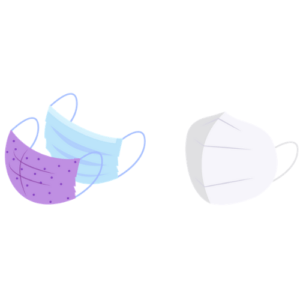
Let’s talk flu, its prevention and home remedies.
Boo-ger season is here! Let’s begin by defining flu (short term for influenza) because it’s usually misunderstood as fever or cold. Flu is a common
We’ve already heard it so many times. Wear a mask. Sanitize or wash hands. Socially distance. Avoid crowds. So much so that sometimes we tune out health rules and regulations. But with the recent spike in COVID-19 patients, with more patients hospitalized and more young people at that, we need to realign and come back to what we’ve always known. COVID-19 is not going anywhere and a 3rd wave has already bulleted its way onto our shores, full throttle.
As always, oDoc is here to provide you with the latest information on COVID-19 and the best protocols for keeping you and your loved ones safe.

COVID-19 is airborne. What does that mean?
COVID-19 is spread through the air by respiratory droplets and aerosols. Aerosols play a significant role in increasing the infectiousness of the virus. They are tiny droplets that can remain suspended in the air for hours with poor ventilation. Bigger respiratory droplets fall to the ground in seconds and reduce the chance of getting inhaled by a non-infected person.
Let’s say you go to your gym. Maybe you’re going at non-peak hours, where there are not many people around. You may think that you could unmask and use whatever equipment you please. But if a COVID-19 infected person used the gym a few hours ago, their infected aerosols will still remain suspended in the air, especially if the space is poorly ventilated, i.e. with no open windows or fans to circulate air.
You can easily breathe in those aerosols and become infected yourself. So even if there is no one else around you in an indoor space at a specific moment in time, you can still get COVID-19 by infected people who were in that space just a few hours ago.
Things to keep strictly in mind, especially when visiting enclosed, indoor spaces:



Avoid entering indoor spaces that include others who are not from your household. If you absolutely need to visit an indoors place, make sure the space is properly ventilated with multiple open windows for cross ventilation and minimize the time spent in this space. The longer time you spend indoors, the higher chance of infection!


If you or a loved one is experiencing any COVID-19 symptoms, use our COVID-19 assessment tool on the oDoc app to understand your symptoms better. Alternatively, you can consult a GP on oDoc to understand next steps if you believe you might have COVID-19.
You can download the oDoc app here.
References:
https://www.thelancet.com/journals/lancet/article/PIIS0140-6736(21)00869-2/fulltext
https://www.bmj.com/content/373/bmj.n913
https://www.bmj.com/content/370/bmj.m3206
https://www.indiatoday.in/world/story/sri-lanka-new-covid-corona-variant-highly-transmissible-airborne-1794632-2021-04-24

Boo-ger season is here! Let’s begin by defining flu (short term for influenza) because it’s usually misunderstood as fever or cold. Flu is a common

As Sri Lanka rolls out its COVID19 booster program, we break down the answers to your most pressing questions. Firstly, what is a booster? A

Back to School – A Battle Between Education and COVID-19 Students are finally returning to school. But as parents, many are worried about COVID-19 safety.
Get the latest health tips delivered straight to your inbox!